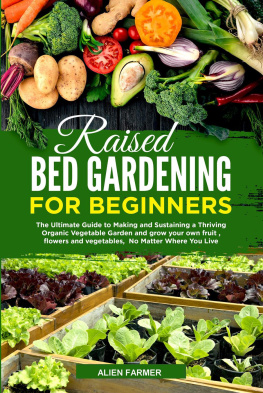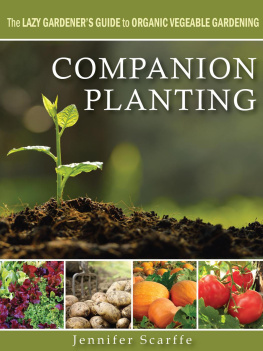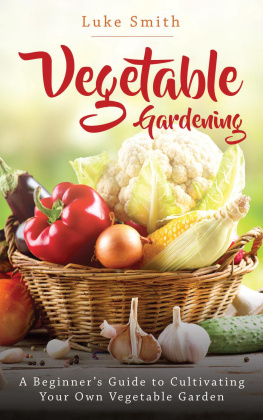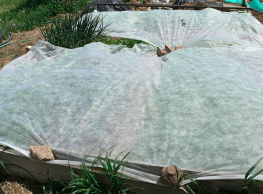Introduction
W hen the first colonists arrived in Virginia in the spring of 1607, they were greeted by a vast wilderness populated by the many tribes of the Powhatan Nation. It was a wilderness for which the colonists were woefully unprepared. When Captain Christopher Newport set sail for the return trip to England on June 22, 1607, he left behind 104 colonists at the new settlement of Jamestown. Within a month, 21 were dead. By the time the first supply ship returned in January 1608, only 38 were still alive.
The Jamestown colonists relied on the native population to supplement their food supply. In 1609, Chief Powhatan, in an attempt to starve the colonists out, blockaded the settlement and withheld all provisions. His strategy almost worked. Of the nearly 500 colonists living at Jamestown in the fall of 1609, only 60 remained by the spring of 1610. This period is remembered as the starving time. Everyone felt the sharpe pricke of hunger, as the colonys governor wrote.
Nevertheless, the English held on and learned to provide for themselves. In July 1610, the newly resupplied colony submitted this surprisingly optimistic report to the London Company of Virginia: We have made triall of our owne English seedes, kitchen hearbes, and rootes, and find them no sooner putt into the ground then to prosper as speedily and after the same quallitie as in England. For the rest of the century, most accounts attested to the fertility of the soil and the luxuriance of the produce, though Virginians were apparently slow to take advantage of this good fortune. Robert Beverley recorded in The History and Present State of Virginia (1705): A Garden is no where sooner made than there. And yet they hant many Gardens in the Country, fit to bear that name.
Beverley may have been too harsh. Virginia in the 17th century was still a wilderness with most households practicing subsistence farming. Corn was, by far, the most important crop, followed by field peas and beans. Livestock thrived, and hogs ran wild through the woods. A vegetable garden provided luxuries rather than staples, and though its produce was a much appreciated diversion from a monotonous diet of meat and grain, it was not always dependable.
In the 18th century, towns such as Williamsburg (founded in 1699) were populated by a professional class of merchants, tradesmen, lawyers, doctors, and clerks with the wealth and leisure to pursue vegetable gardening. For instruction, they turned to the English garden works of Philip Miller, Richard Bradley, John Abercrombie, and others. The Virginian climate was very different from the English climate, so the garden information found in these works had to be adapted to suit local conditions.
The first American garden book, A Treatise on Gardening, was written in Williamsburg by John Randolph, the last royal attorney general for the colony of Virginia. There are no copies of his original work, and later editions are attributed only to a native of this State. We have deduced that Randolph was the author based on citations from several contemporary sources, one being Thomas Jeffersons reference to the Treatise as the work of John Randolph.

It is not known exactly when the Treatise was written. Randolph was a loyalist and returned to England in 1775, so he must have written his treatise before then. Most evidence points to the middle years of the 1760s. The only known 18th-century copy of this little book is a 1793 edition published in Richmond and kept at the Wyndham Robertson Library at Hollins University in Roanoke, Virginia.
Randolph closely followed the advice found in Philip Millers The Gardeners Dictionary, published in England. A comparison of the two works reveals Randolph was working from either the 1752 folio or the 1754 abridgement of The Gardeners Dictionary. Randolphs Treatise was not, however, merely a copy of Millers more famous work. Randolph was clearly writing from his own experience in the New World. Most notably, he changed the planting dates to suit the Virginia climate. He also observed, for example, that the multiple spring sowings of spinach recommended for England resulted, in Virginia, in plants bolting and going to seed.
Like Randolph, we use 18th-century English garden works as guides to keeping our Colonial Garden and Nursery on the Duke of Gloucester Street in Colonial Williamsburgs historic area. Like Randolph, we have adapted this information to suit the Virginia climate; we also have altered his advice to suit the 21st-century climate. It was much colder in 1765 Virginia than it is here today.
Most of the tools used in our garden are made in the shops and yards of our historic tradespeople. The blacksmith makes our metal tools, the coopers make the buckets, and our watering cans are made by one of our multitalented gunsmiths. The wheelwrights make our wheelbarrows, the joiners make our frames, and the basketmakers weave our baskets. Bricks come from our wood-fired kiln, and the paper for our frames is provided by our printers. Glass and glass bells come from abroad, as they would have in the 18th century. The modern gardener would recognize most of our hand tools, and many gardening tasks have spanned the centuries relatively unchanged. Often the difference is in the materials rather than the method. For example, we provide bottom heat to our seedbed by using fermenting manure, while the modern gardener uses electric mats. We cover our hoops with oiled paper, while the modern gardener uses plastic. The materials may be different, but the method and results are the same.
For some tasks, technology has made a dramatic difference in the way we garden. The ability or inability to water the garden has been the single most important limiting factor to gardening throughout history, particularly in southern climates. Many of mans earliest inventions (the Assyrian shaduf, the Roman aqueduct, the Greek Archimedes screw) were devices for moving water. In 18th-century Williamsburg, water had to be hauled from a well.
We have found, in our small -acre garden, that with hauling water from the well, filling up the cistern, and using watering cans, the two of us can move 4,000 pounds (about 200 gallons) a day and still not keep up with our needs when summer stays dry. In 18th-century Williamsburg, the garden was the responsibility of the lady of the house, and she was at the mercy of the weather. Only families wealthy enough to afford slave labor to move the water could reliably keep a summer garden.
Even then, it was an overwhelmingly difficult task. John Custis, who kept a 4-acre garden on the edge of town, lamented in a 1738 letter to Peter Collinson: I kept 3 strong Nigros continually filling large tubs of water and put them in the sun and waterd plentifully every night, made shades and arbors all over the garden allmost; but abundance of things perishd; notwithstanding all the care and trouble, so that my garden is very much impaired.











